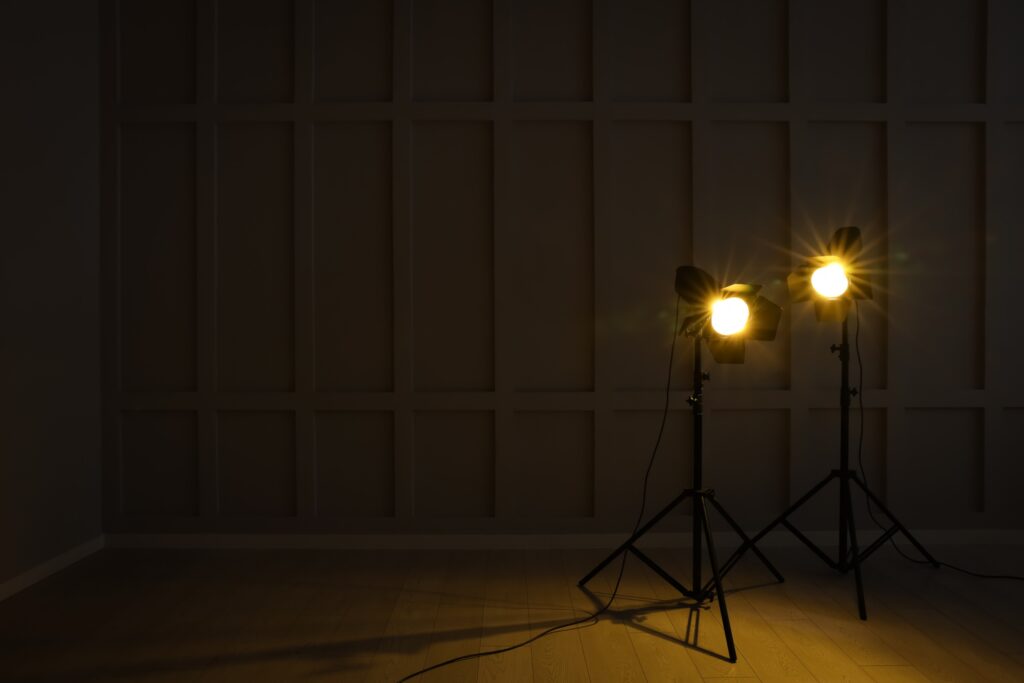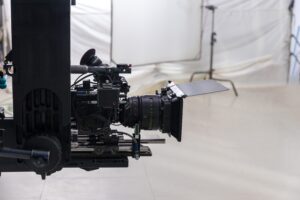Photography is all about capturing the essence of your subject in a single image. Whether you’re taking photos for your personal collection or for your brand, lighting techniques are critical to highlight your subject’s best features and capture stunning images. By mastering these techniques, you can add depth and dimension to your photographs, and showcase your brand’s personality and uniqueness.
With the right lighting techniques, you can make your subject stand out, bring out colors and textures, and create a mood that resonates with your brand’s values. Your images will look more professional and polished, and you’ll be able to attract more customers and followers to your brand.
In this article, we’re going to explore the importance of lighting techniques in photography and how they can help illuminate your brand’s best features. We’ll share tips and techniques for mastering the art of photography, discuss essential photography equipment for optimal lighting, guide you through building a stunning photography portfolio, and provide recommendations for enhancing your photography skills through continuous learning.
So, whether you’re a beginner or a seasoned photographer, keep reading to discover how you can transform your images and capture brilliance in every shot.
The Art of Photography: Mastering Lighting Techniques
If you want to take your photography skills to the next level, mastering lighting techniques is essential. Proper lighting can transform an ordinary photo into a stunning masterpiece, so it’s worth investing time and effort into learning how to use lighting to your advantage.
Understanding the Basics of Lighting
Before you start experimenting with lighting techniques, it’s important to understand the basics of lighting. There are three main types of lighting: natural light, artificial light, and mixed light. Natural light is the light that comes from the sun, while artificial light includes studio lights, flashlights, and other sources of light that are not natural. Mixed light is a combination of natural and artificial light.
When it comes to photography, natural light is often the preferred choice because it produces soft, flattering light. However, artificial light can be used to create dramatic effects or to light up a subject in a dark environment. Mixed light can be tricky to work with because it can cause color cast and shadows.
Using Lighting Techniques to Enhance Your Photos
Now that you understand the basics of lighting, it’s time to start using lighting techniques to enhance your photos. Here are some tips:
“Lighting is everything in photography. Without light, there is no photograph.”
-Anonymous
- Backlighting: This technique involves placing the light source behind the subject, highlighting the outline and creating a halo effect. It’s perfect for creating dramatic portraits or emphasizing texture.
- Side lighting: This technique involves placing the light source at a 90-degree angle to the subject, creating shadows and depth. It’s perfect for highlighting texture and creating mood.
- Fill lighting: This technique involves using a secondary light source to fill in shadows and even out the light. It’s perfect for outdoor photography, where the sun can create harsh shadows.
- Reflective surfaces: This technique involves using reflective surfaces, such as mirrors or whiteboards, to bounce light onto the subject. It’s perfect for creating soft, even light.
Investing in Photography Equipment for Optimal Lighting
Using the right equipment can make a huge difference in the quality of your photos. Here are some essential items to invest in:
- Lighting sources: Studio lights, flashlights, and other sources of light can help you achieve optimal lighting in any environment.
- Modifiers: Softboxes, diffusers, and reflectors can be used to adjust the intensity and direction of the light to create the desired effect.
- Accessories: Light stands, booms, and grids can help you position and direct the light for optimal results.
Mastering Photography Techniques with Continuous Learning
Photography is an ever-evolving art, so it’s important to stay up-to-date with the latest techniques and trends. One of the best ways to do this is by following photography blogs. Here are some popular options:
- DP Review: This blog features news, reviews, and tutorials on all things photography.
- Strobist: This blog is dedicated to off-camera flash photography and features tips and tutorials on lighting.
- PetaPixel: This blog features a mix of news, tutorials, and inspirational content for photographers of all skill levels.
By continuously learning and honing your skills, you can take your photography to the next level and create stunning images that highlight your brand’s best features.
Essential Photography Equipment for Optimal Lighting
When it comes to photography, lighting is one of the most crucial elements for achieving optimal results. Using the right equipment can make a significant difference in the quality of your photographs. Here are some essential photography equipment you need for optimal lighting:
Lighting Sources
The most basic lighting source is natural light, which can produce some stunning images. However, natural light alone may not always be sufficient, especially when shooting indoors or during low-light conditions. Alternatively, you can invest in artificial lighting sources such as studio strobes or continuous lights. These lighting sources offer more control over the intensity, direction, and color temperature of the light.
Modifiers
Modifiers are accessories that can be attached to your lighting sources to modify the quality of light. Examples of modifiers include softboxes, umbrellas, and reflectors. Softboxes help diffuse the light, creating a softer and more natural look. Umbrellas are versatile modifiers that can be used to bounce or reflect light. Reflectors, on the other hand, redirect light to specific areas, creating highlights or filling in shadows.
Accessories
Accessories are additional equipment that can help enhance your lighting setups. One essential accessory is a light meter, which helps measure the intensity of light. This can help you determine the appropriate settings for your camera, ensuring correct exposure. Other accessories include gels, which can be used to change the color temperature of your lighting, and grids, which help control the spread of light.
Investing in the right photography equipment can help you achieve optimal lighting for your photographs. With the right lighting sources, modifiers, and accessories, you can create stunning images that showcase your brand’s best features.
Building a Stunning Photography Portfolio
Your photography portfolio is a reflection of your skills, creativity, and style as a photographer. It is essential to make it stand out to attract potential clients to your photography services.
A photography studio is an ideal setting to showcase your work. A dedicated space allows you to set up different backgrounds, lighting, and props to capture stunning images that represent your style and brand. A clean and organized studio creates a professional impression and allows potential clients to envision themselves being photographed in the space.
Pro Tip: Invest in professional-grade equipment and accessories, such as lenses, tripods, and lighting sources, to elevate the quality of your photographs and make your portfolio stand out.
When building your portfolio, consider different styles and techniques that can showcase your range as a photographer. If you specialize in a particular niche, such as portrait photography, ensure that you include a variety of shots to showcase your versatility. Highlight your best work and create a narrative that tells a story and engages the viewer.
Aim to make your portfolio visually appealing and easy to navigate. Organize your images into categories, such as portrait, landscape, and lifestyle photography. Use high-quality images that are well-lit and properly edited to showcase your skills and attention to detail.
Take Action Now
Take the time to curate a stunning photography portfolio that represents your brand and style. Invest in professional-grade equipment, choose your best work, and create a narrative that engages the viewer. This will make you stand out and attract potential clients to your photography services.
Enhancing Your Photography Skills Through Continuous Learning
Photography is an ever-evolving art form, and staying current with the latest trends and techniques is essential for improving your skills. Following photography blogs is one of the most effective ways to stay inspired and up-to-date with the latest developments in the industry.
There are many great photography blogs available on the internet, covering a wide range of topics from beginner tips to advanced techniques. By regularly reading these blogs, you can gain valuable insights into the best ways to use lighting techniques to create stunning photographs that capture the essence of your brand.
Popular photography blogs include Digital Photography School, PetaPixel, and Fstoppers, which regularly publish articles on everything from lighting tips to gear reviews. These blogs feature contributions from experienced photographers and industry experts, making them an excellent resource for photographers of all skill levels.
Another way to enhance your photography skills is to attend workshops and seminars. Many photography studios and organizations offer these events, which provide opportunities to learn new techniques, network with other photographers, and gain insights into the latest trends in the industry. To find workshops and events in your area, check out photography associations and organizations such as the Professional Photographers of America and the National Association of Photography.
In conclusion, following photography blogs and attending workshops are excellent ways to enhance your skills and stay up-to-date with the latest trends and techniques in the industry. So, keep learning, keep practicing, and soon enough, you’ll be creating stunning photographs that showcase the best features of your brand.
Conclusion
Congratulations on taking the first step towards mastering the art of photography and lighting techniques. By implementing the tips and techniques discussed in this article, you can elevate the quality of your photographs and capture brilliance in every shot.
Remember, investing in the right equipment and continuously learning from photography blogs can help you stay inspired and improve your skills. Building a stunning photography portfolio can attract potential clients to your photography services and help you stand out in a crowded marketplace.
So, go ahead and experiment with different lighting techniques, explore the art of photography, and watch your images transform into visual masterpieces. With dedication and persistence, you can become a professional photographer and create stunning images that will awe your audience.
FAQ
Q: What are some basic lighting techniques in photography?
A: Some basic lighting techniques in photography include natural light, artificial light, diffused light, backlighting, and fill light. Each technique can be used to create different moods and highlight specific features in your images.
Q: How can lighting techniques enhance the best features of my brand?
A: Lighting techniques can help you showcase the best features of your brand by emphasizing textures, colors, and shapes. By using proper lighting, you can create a visually appealing representation of your brand that captures attention and communicates your message effectively.
Q: What photography equipment is necessary for optimal lighting?
A: Essential photography equipment for optimal lighting includes a camera with manual settings, a tripod, different light sources like speedlights or studio strobes, light modifiers such as softboxes or umbrellas, reflectors, and light stands. These tools will allow you to control and manipulate light to achieve desired effects.
Q: How can I build a stunning photography portfolio?
A: To build a stunning photography portfolio, consider selecting your best images that showcase your skills and style. Choose a cohesive theme or focus to create a visual narrative. Include a variety of subjects and techniques to demonstrate your versatility. Finally, organize your portfolio in a visually appealing and user-friendly format.
Q: How can continuous learning improve my photography skills?
A: Continuous learning through following photography blogs and staying updated with trends, techniques, and inspiration can help you expand your knowledge and improve your photography skills. By learning from others, you can discover new perspectives, techniques, and ideas that will enhance your own work.




